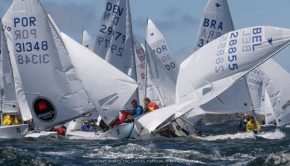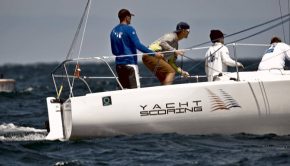Decisions Regarding Online Communication
Published on February 5th, 2014
If a tree falls in a forest and no one is around to hear it, does it make a sound?
If races are held and there is no information online, did it really happen?
The online expectations for sailing events have increased to now be a vital component for an event’s success. In determining how to fulfill these expectations, the primary variable isn’t so much boat type as it is event type.
Every aspect of event organization varies based on the size and significance. The needs of small club races are much different from national class championships and prominent keelboat events. Determining the scope of the online communication is based on the size of the event, or specifically, who the audience is.
For smaller events, the audience is the event participants. Online communication provides advance event details to help participants plan (ie, NOR, SI’s, etc.), and then to post results after each day of racing. For more prominent events, the audience is significantly larger than those participating, so additional information is also needed to cater to their desires (ie, daily schedule, live updates, photos, videos, daily recap reports, etc.).
Another increasing factor is sponsorship. For event sponsorship, event communication is a means to increase the exposure and value for the sponsor. If your event relies on the participation of sponsored sailors, it is vital to heighten the awareness of the event.
Regardless of event scope, there needs to be a single ‘place’ on the internet for all information. The audience should need only one website address with easy navigation to find information. This not only provides for a simple system, but also insures the website captures all online traffic. Any information distributed by email must also be posted online at the event website.
Capturing all the online traffic is essential when events have sponsors. Each page of the event website is ideally framed with sponsor banners that link to their website. If a viewer is looking at hotel listings, social schedule, SI’s, or results, they need to also be viewing the sponsor banners. While it is great for an event to receive exposure from outside media, if online traffic is not ultimately being steered to the event website, then the event and its supporters are not fully benefiting from the power of the internet.
Once the racing begins, the audience is now largely non-participants, and the website offers a marketing opportunity to increase participation for annual events. For one design events, the audience might also include non-class members, to which the information might hope to grow interest in the class. The people charged with online communication must realize this purpose. For larger events, this commitment is most crucial during race days.
The sport has grown to expect more event information online, and that information to be promptly provided. For even the smallest event, preliminary results (with a time stamp) should be posted online as soon as they are available. For events that provide daily reports, these should not be far behind. The promptness of event information reflects directly on the host club, one design class (if applicable), and event supporters.
Once an event is completed, the content of the event’s online communication must be archived forever. Being able to review past event history is of significant value for event organizers, participants, media, one design class administrators, etc. As a result, selecting the event website address is a crucial decision. Here are the options…
Annual event website (eventname.com)
Easy to use, keeps information under control of event, good for maintaining history, but needs efficient layout for each year. Should be set up with basic home page and then each event is hosted as an extension (ie, eventname.com/2014)
Temporary event website (ClassName2014USnationals.com)
Unique for the event, in full control by the event organizers, but will disappear when the URL is not renewed. Good short term option but horrible long term solution. Relevant information must be moved to class member website following the event.
One Design Class website (ClassName.org/2014USnationals)
Keeps information under control of class, keeps event information near all class information, good for maintaining history, but safeguards may be needed to limit access to only event platform.
One Design Class event website (ClassNameUSnationals.com/2014)
Sufficiently unique for the event, maintains history, but safeguards may be needed to limit access to only event platform.
Host Yacht Club website (HostYachtClub.org/ClassName2014USnationals)
Might be easiest for event organizers to set up, but not very unique for the event. Relevant information must be moved to class member website following the event.









 We’ll keep your information safe.
We’ll keep your information safe.